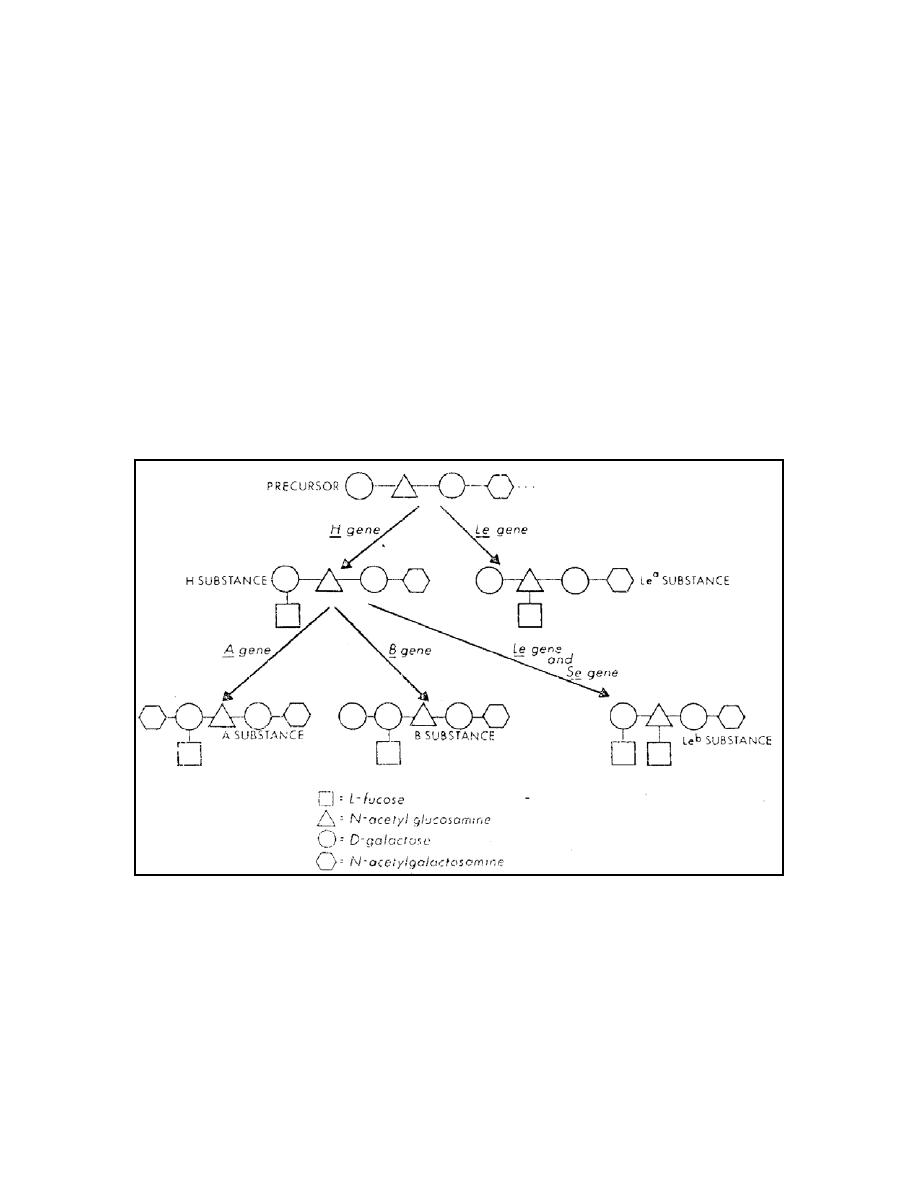
2-9.
GENETIC AND BIOCHEMICAL CONSIDERATIONS
a. Nature of A and B Antigens. The red blood cell membrane is crowded with
antigenically active molecules. Prominent among these are large, complex, sugar-and-
lipid-containing molecules which carry peripheral chains of sugars attached to a
backbone that inserts into the membrane. Specific sugars, in specific linkage
conformations, determine the antigenic activities called A and B. The presence of 1
sugar, N-acetylgalactosamine, gives the molecule A activity; a different sugar,
D-galactose, determines B activity. These sugars, when present, occupy a
predetermined location, attached to D-galactose, which resides at the end of a chain
containing other sugars in an unvarying order. The D-galactose that anchors the N-
acetylgalactosamine (for A) or D-galactose (for B) must also have a second sugar, L-
fucose, attached in a specific configuration. Without the L-fucose, the other 2 sugars
cannot attach. The D-galactose-plus-L-fucose configuration, without added D-galactose
or N-acetylgalactosamine, has antigenic activity called H (see figure 2-2).
Figure 2-2. Development of H, AB, and Lewis antigens.
MD0845
2-8


 Previous Page
Previous Page
